My Experience Teaching English in Nepal (Part II)
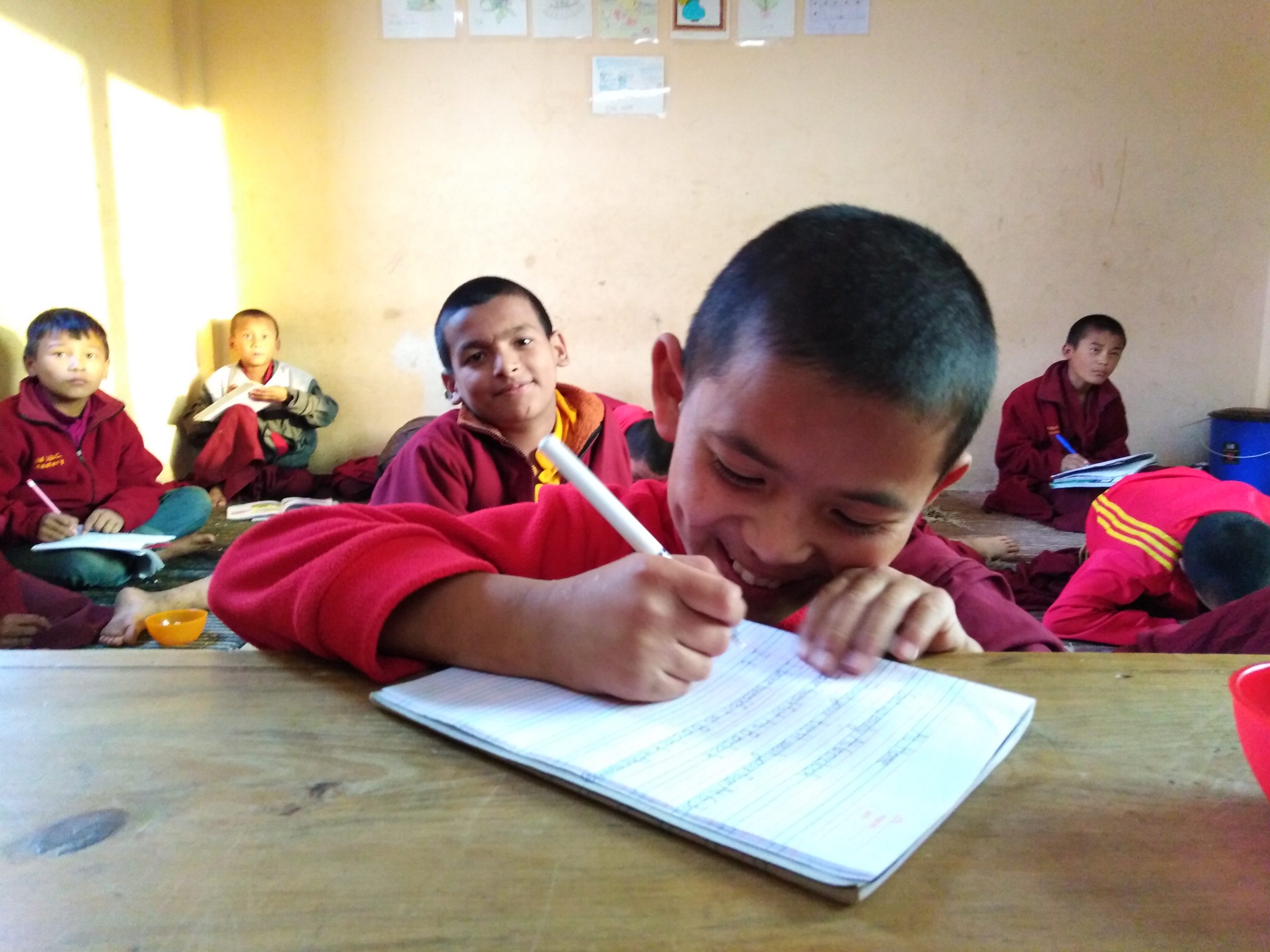
About This Resource
Details
Part II: A Day of Teaching
By Denitsa Gancheva
[This is part II in a series of blog posts about my personal experience teaching English at the Maratika Monastery in Nepal. Here you can find Part I and Part III.]
My first day of teaching was supposed to be a Tuesday. I remember that clearly because I had to mark this as the first “Western” preconception that was challenged during my stay. Why does a typical work week start on Monday anyways? On the Monday I was supposed to attend my welcome ceremony, involving each monk presenting me with a khata. Over 40 smiling, open, slightly embarrassed faces—mine included—in a tiny room, getting through our first official encounter. However, right after this, the boxes of school textbooks and supplies appeared and I was told that my first class should begin. “Ehm, but that’s not until tomorrow,” the panic in my head shouted, while out loud I said “Oh, how wonderful! We’ve got no time to lose!” There goes preconception number two: plans are written in anything but stone in Nepal, yet things always work out. In hindsight, this has been one of the best lessons in letting go and trusting I’ve received in my life so far.
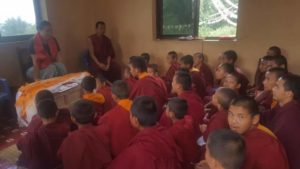
First day of teaching
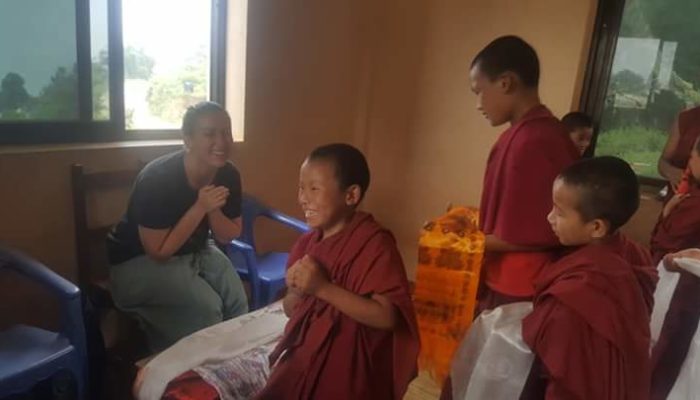
The teacher has a responsibility not to adjust the monks’ daily tasks to fit her classes but, on the contrary, to adapt to their routine.
The monks were divided into 3 groups, the largest one coming in the morning and two more in the afternoon, and classes took place from Mondays through Fridays, unless there was a celebration or it was the 10th or 25th day of the Tibetan calendar (Guru Rinpoche and Dakini day respectively), when there are tsog offerings practically all day. An almost hour-by-hour description of one regular teaching day is available here.
I was slowly moving into a routine and observing how important it is for any foreign teacher in such a setting to try to fit into the daily lives of the monks. Teaching is such a holistic task, it is so much more than just being there to give an English class three times a day. The teacher has a responsibility not to adjust the monks’ daily tasks to fit her classes but, on the contrary, to adapt to their routine. So I started making a conscious effort to hang out with the monks in between classes. Without interfering in their activities, just minding my own work, and only if the moment allowed interacting with them. At first they didn’t know what to do with me around. They live in a setting which is very structured and hierarchical, and the Buddhist teachers usually have so many other responsibilities next to teaching (they are ordained monks so naturally they have their own daily practices to adhere to). But my sole purpose there was actually to be with the monks, so spending my time with them was my daily practice. Within about two weeks, they were used to me being around during their free time. I would slowly be allowed closer and closer to any group—the ones building something for the monastery, or the ones chatting away, or the ones who were quietly sitting and memorizing sutras.
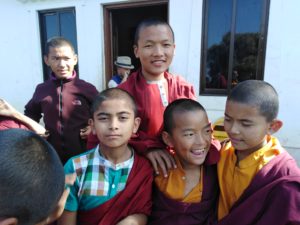
Free time
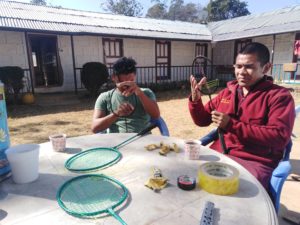
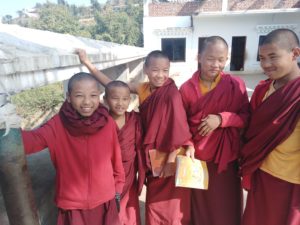
Since I was the first foreign teacher there, it did take some time before I was allowed in, but I am so thankful I persisted. It is one of the most heartwarming experiences—the moment when you realize you’re now a part of the group and can sit together with a monk while he’s reading a sutra in Tibetan and trying to translate it for you in English; or when you’re invited to participate in a badminton “tournament” and you don’t just get to play with the other teachers; or sitting next to a 6-year-old monk when he suddenly exclaims, “Miss! Pig! P-I-G, pig!”.
Teaching someone something requires an open-ended approach, which is created in the moment, in tune with the students and their needs.
Such moments constituted one of the core teachings I received while there: being a teacher only begins with coming prepared to class and knowing how to explain the material. I observed that a lot of what we began learning in the classroom was actually becoming internal knowledge outside of class, during the monks’ free time. Exposing the students to the regular presence of an English speaker meant that eventually they would be comfortable enough to overcome their shyness and so unlock their language abilities. The conventional way of teaching in its intrinsic hierarchical setting is only part of the story; but actually coming full circle and teaching someone something requires an open-ended approach, which is created in the moment, in tune with the students and their needs.
And last but not least, being a Western teacher in a Buddhist setting is about actually first and foremost showing respect towards Buddhism and Buddhist practices. It is about engaging in daily routines and rituals, sitting in on pujas, doing koras with the monks, and being curious in an open, respectful way.
This intricate relationship between the students and the teacher has interested me a lot during my stay at Maratika and I will try to unpack it a little further in the next part of the series.
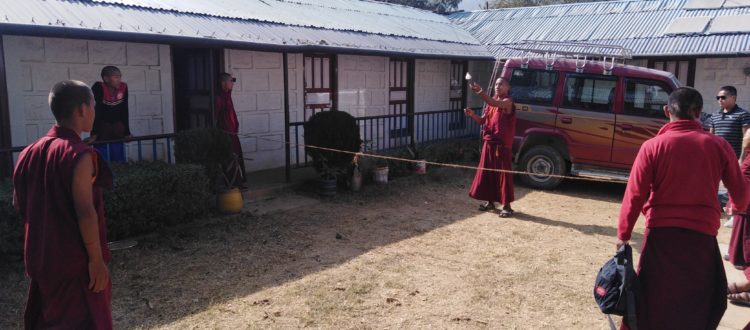
Our little badminton “tournament”
